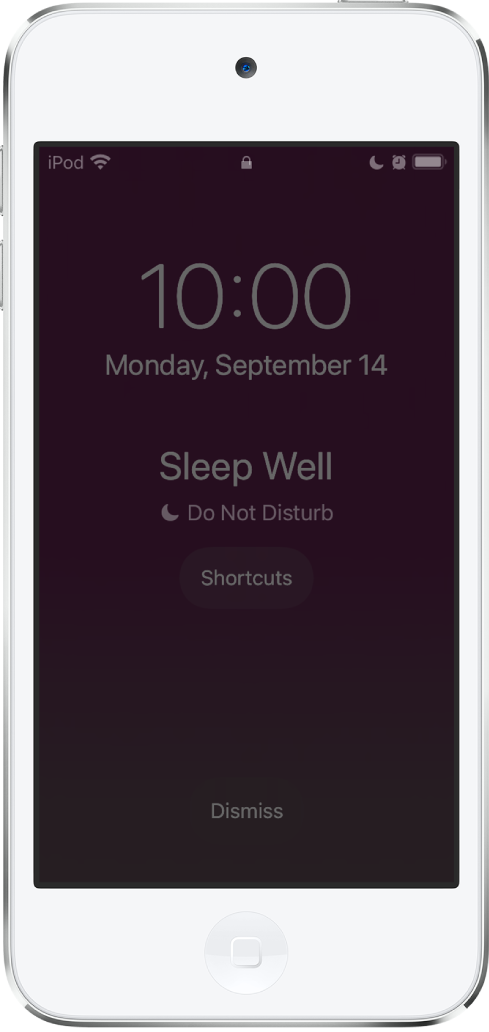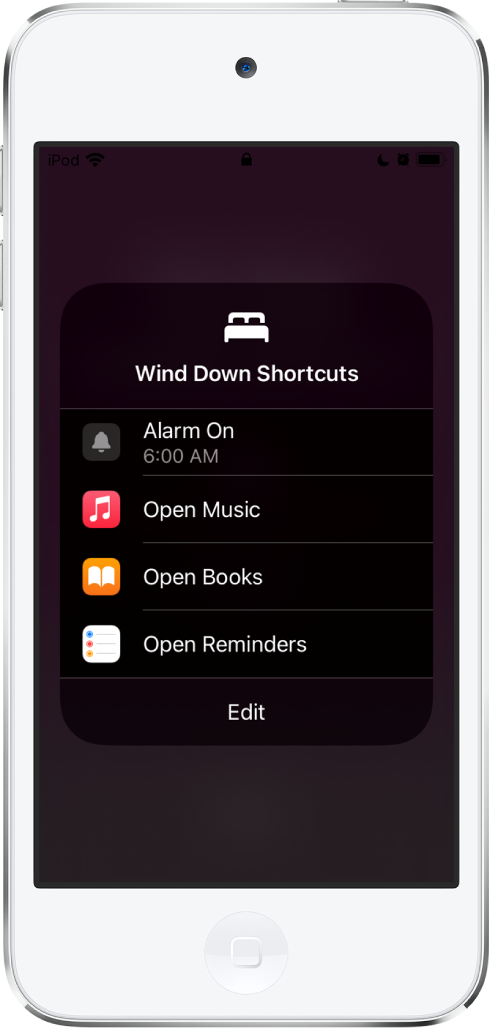iPod touch User Guide
- Welcome
- Your iPod touch
- What’s new in iOS 14
-
- Wake and unlock
- Learn basic gestures
- Adjust the volume
- Change or turn off the sounds
- Access features from the Lock Screen
- Open apps
- Take a screenshot or screen recording
- Change or lock the screen orientation
- Change the wallpaper
- Search with iPod touch
- Use AirDrop to send items
- Perform quick actions
- Use and customize Control Center
- Add widgets
- Charge and monitor the battery
- Learn the meaning of the status icons
- Travel with iPod touch
-
- Calculator
-
- View maps
-
- Use Siri, Maps, and widgets to get directions
- Choose your preferred type of travel
- Get driving directions
- Report traffic incidents
- Get cycling directions
- Get walking directions
- Get transit directions
- Change audio settings for turn-by-turn directions
- Select other route options
- Get directions between places other than your current location
- Delete recently viewed directions
- Use Maps on your Mac to get directions
- Help correct and improve Maps
- Get rides
-
- View photos and videos
- Delete and hide photos and videos
- Edit photos and videos
- Edit Live Photos
- Organize photos in albums
- Search in Photos
- Share photos and videos
- View Memories
- Find people in Photos
- Browse photos by location
- Use iCloud Photos
- Share photos with iCloud Shared Albums
- Use My Photo Stream
- Import photos and videos
- Print photos
- Shortcuts
- Stocks
- Tips
- Weather
-
- Accessories for charging iPod touch
-
- Set up AirPods
- Charge AirPods
- Start and stop audio playback
- Change the AirPods volume
- Make and answer calls with AirPods
- Switch AirPods between devices
- Use Siri with AirPods
- Listen and respond to messages
- Share audio with AirPods and Beats headphones
- Change noise control modes
- Restart AirPods
- Change the name of your AirPods and other settings
- Use other Bluetooth headphones
- Use EarPods
- Check headphone sound levels
- HomePod and other wireless speakers
- External storage devices
- Magic Keyboard
- Printers
-
- Get started with accessibility features
-
-
- Turn on and practice VoiceOver
- Change your VoiceOver settings
- Learn VoiceOver gestures
- Operate iPod touch using VoiceOver gestures
- Control VoiceOver using the rotor
- Use the onscreen keyboard
- Write with your finger
- Use VoiceOver with an Apple external keyboard
- Use a braille display
- Type onscreen braille
- Customize gestures and keyboard shortcuts
- Use VoiceOver with a pointer device
- Use VoiceOver in apps
- Zoom
- Magnifier
- Display & Text Size
- Motion
- Spoken Content
- Audio Descriptions
-
- Copyright
Intro to sleep schedules in Health on iPod touch
To help you meet your sleep goals, you can use the Health app ![]() to schedule times for unwinding at the end of your day, getting to bed, and waking up. You can create multiple schedules—for example, one for weekdays and another for weekends.
to schedule times for unwinding at the end of your day, getting to bed, and waking up. You can create multiple schedules—for example, one for weekdays and another for weekends.
Sleep mode
Sleep mode helps reduce distractions at bedtime. After you set a sleep schedule, Sleep mode simplifies your Lock Screen and turns on Do Not Disturb during your scheduled bedtime. Do Not Disturb silences notifications and calls and prevents them from lighting up the screen.
Note: When Do Not Disturb is on, you can allow calls from your emergency contacts, from various groups, or from everyone. See Set Do Not Disturb on iPod touch.

Wind down period
To help you relax before going to sleep, you can schedule Sleep mode to begin from 15 minutes to 3 hours before your bedtime by setting a wind down period.
If you enjoy activities like reading or listening to music before you go to sleep, you can select Wind Down Shortcuts for these activities. These shortcuts are available when iPod touch is in Sleep mode.

Wake up alarms
To help you wake up on time, you can select an alarm sound and a snooze option. Or you can choose to have no alarm at all.
Note: You can use the Clock app  to set one-time and repeating alarms that don’t employ the Sleep mode screen, Do Not Disturb, or Wind Down shortcuts. Unlike sleep schedules in Health, Clock allows you to select songs for its alarms.
to set one-time and repeating alarms that don’t employ the Sleep mode screen, Do Not Disturb, or Wind Down shortcuts. Unlike sleep schedules in Health, Clock allows you to select songs for its alarms.
After you set up your first sleep schedule, you can set additional schedules. You can also modify, turn off, or remove any schedule you create.